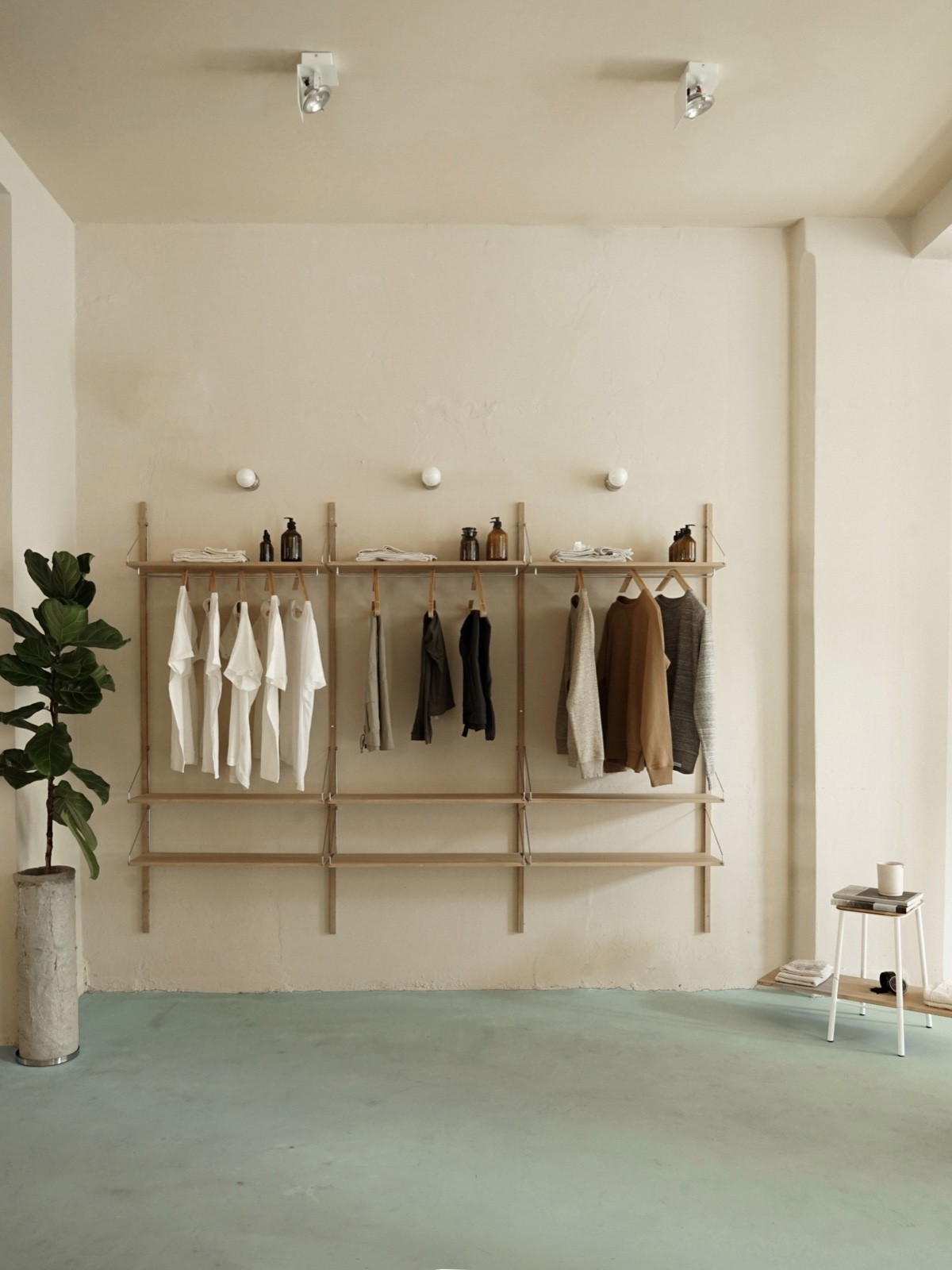MAR MIKHAEL
TEMPORARELY CLOSED



The Slow was thoughtfully designed to embody calmness, intention, and understated elegance. The architecture is defined by open, airy zones softened by a muted color palette and a refined interplay of textures. The structural system including exposed drop beams was preserved, allowing natural light to flow freely while emphasizing the openness of the space. By leveling the flooring and removing interior walls, visitors experience a seamless transition from one area to the next, without any rigid separations.
Executed in collaboration with Copenhagen-based Frama Studio, the design transforms a traditional Lebanese café into a contemporary concept space. Frama completely reimagined the interior — stripping it down to its core and rebuilding it with custom-built furniture, oiled pine wood, marble, and blackened metal details. The palette balances lime-washed and beige walls with soft greens and natural textures, creating a warm, grounded environment. Furnishings from Frama including tables, lighting, seating, and kitchen units establish a minimalist yet inviting mood. A folding glass door opens to a courtyard, enhancing the sense of indoor-outdoor fluidity so essential to Beirut’s lifestyle. A portion of the space is dedicated to a shop that highlights sustainable products, while the rest remains open for multiple uses: working, conversing, relaxing, drinking, or dining whether in solitude or among friends. Every detail was carefully chosen to enhance the overall experience. From Scandinavian furniture to handcrafted Japanese cutlery and Portuguese ceramic plates, each element contributes to The Slow thoughtful atmosphere, making The Slow not just a place, but a feeling.
Sari was careful to retain the vernacular of the area and the memories of the previous café in the process. “Mar Mikael is a melting pot of artists, poets, painters, designers, thinkers, and other creatives, who have all either found a home or set up a shop here. It’s a truly special neighborhood, which lends itself to being discovered by getting lost in its narrow streets and tiny alleyways.” – Sari, aware of the fact that this is an old building situated in an old neighborhood, which was and still is inhabited and shared by people from all walks of life. We tried to preserve this rich history. A lot of the structural elements still remain and in places left some walls bare with traces of the café’s past life. On the whole we decided to create a very simple space where the furniture would establish a homie look and feel while staying true to the history of the space.